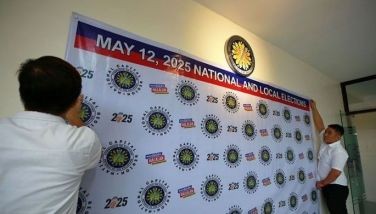Philippines, US eyeing to increase number of EDCA sites

WASHINGTON – The Philippines and the US are eyeing to increase the number of sites that American troops can access under the Enhanced Defense Cooperation Agreement (EDCA) to allow Washington to respond faster to crisis situations, a Pentagon official confirmed.
The senior US defense official said the two countries are planning to add five more sites to the five existing EDCA locations – the Cesar Basa Air Base in Pampanga, Fort Magsaysay in Nueva Ecija, Lumbia Air Base in Cagayan de Oro, Benito Ebuen Air Base in Cebu and the Antonio Bautista Air Base in Palawan.
“We’re going to accelerate investments in infrastructure at the five existing EDCA sites and also... we would consult closely and look at the map for additional sites that could be added to the EDCA in the future. We need this agreement to move more quickly on funding and infrastructure support at the five EDCA sites,” the official told reporters at the Pentagon last Wednesday.
“There are five existing EDCA sites and five additional ones we are looking at,” the official added.
The official could not provide specifics on the additional EDCA sites, saying consultations between the two countries are ongoing.
Signed in 2014, EDCA provides American forces access to agreed locations in the Philippines on a rotational basis, for security cooperation exercises, joint military training and humanitarian assistance and disaster relief activities, according to the US State Department’s website.
It is one of the defense agreements that stemmed from the 1951 Mutual Defense Treaty, which allows the Philippines and the US jointly develop their defense capabilities to counter external armed aggression.
While EDCA is widely seen as a response to China’s aggressive expansion in the South China Sea, the official clarified that the agreement covers more than just the maritime row.
“I think they are very much related to our commitment to standing beside the Philippines as a treaty ally so I would say that (it) is broader than the South China Sea. But it is ensuring that we are able to support the Philippines, work alongside the Philippines in responding to a range of challenges including... any kind of disaster or other problems in the Philippines that we would want to offer support for,” the official said.
“Having enhanced EDCA sites, I think, allows us to respond more quickly to a range of disasters or crises that could happen in any number of areas as well as (provide) greater training for both of our forces because it allows us to train and exercise together in different areas.”
The Philippines and China are embroiled in a maritime row over some areas in the South China Sea, where more than $5 trillion in ship-borne trade passes through every year.
In 2016, an arbitral court in The Hague invalidated China’s historic claim to the resource-rich area but the Chinese government refused to recognize the ruling.
Gregory Poling, director of the Southeast Asia Program and Asia Maritime Transparency Initiative at the Center for Strategic and International Studies, said EDCA is important as no American forces are close enough to actually defend Filipinos should they be attacked in the South China Sea.
Last Wednesday, US Ambassador MaryKay Carlson said her country is expected to spend $70 million for infrastructure improvements for the Philippine military. She added that Manila and Washington are looking at more ways to expand EDCA.
Not just military
The $70 million or P4 billion that the United States is planning to allocate to the Philippines in the next two years should be in the form of cash or for improving food production and not just for military facilities, senators said.
Senate Minority Leader Aquilino Pimentel III said the US assistance to the Philippines should not be purely military aspects that could be misconstrued as a preparation for war.
“How about an agricultural agreement that will assist the Philippines in producing more food from our land? Don’t be all military as if we are preparing to go to war,” Pimentel said.
The United States is planning to allocate $70 million to the Philippines in the next two years as part of the implementation of the EDCA.
Like Pimentel, Sen. Robinhood Padilla acknowledged that both US and China have a big part in the Philippine culture but the planned military assistance of the US might puzzle China and could be construed as strengthening the military bases of the US. – Cecille Suerte Felipe
- Latest
- Trending
































